Preparing for a Motorcycle TourMotorcycling articles by Leonard R. 
| |
|
I guess I got the touring bug back in 1965, when I was 18. A friend and I had purchased new Honda CB 160's a few months earlier and decided to see some of the country. We didn't know we were "touring." We just wanted to ride somewhere. We had many memorable experiences on that trip. But then, that's a whole different story.
Touring is getting outside your usual travel routes and onto roads with different numbers and maybe to destinations never seen. If you want to ride with out apprehension, touring requires a little planning. Which in it self causes some mild excitement. Planning a tour can be simple or complicated, depending upon your life style and what you want to endure. When Judy and I started touring, it was 100% tent camping and we camp where we ended the day. As the ground got harder, we opted for KOA cabins as often as we could.
| |
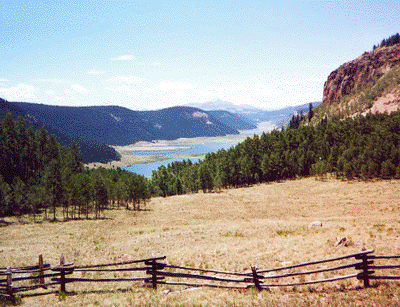 You don't necessarily have to make any plans for a tour. You really can just pack up and go, letting the road take you where ever it meanders. But, we like the excitement and expectations of planning. We usually start planning our tour 10 months in advance doing bits and pieces over the course of the year.
You don't necessarily have to make any plans for a tour. You really can just pack up and go, letting the road take you where ever it meanders. But, we like the excitement and expectations of planning. We usually start planning our tour 10 months in advance doing bits and pieces over the course of the year. First we have to determine how much time we can devote to a tour. Job changes and other factors can shorten holiday or vacation time. Once the time frame is figured out, we then decide when to take the tour. Mid summer? Early fall? After the last summer holiday? After selecting the time period, we next determine where we want to tour. Once a general place to tour to, has been agreed upon, we need to check to see what the travel locations have to offer. Back in the days before the internet, this was done by requesting maps and brochures to see what location could provide things of interest. Now with the internet, that job is so much easier and faster. Just Google in a place, region or name and you have instant information. Based on your information you can plan your route more specifically.
| |
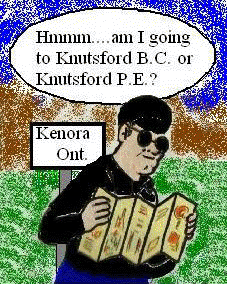 We also check to see what the helmet laws are where we are traveling. In Canada. DOT or Snell approved helmets are required everywhere. In the United States, it's a state by state decision.
We also check to see what the helmet laws are where we are traveling. In Canada. DOT or Snell approved helmets are required everywhere. In the United States, it's a state by state decision. We used to spend countless nights pouring over maps. With the advent of a computer program that does this much faster, I only spend a few nights determining my route. We still use Rand McNally's Trip Maker computer program, purchased in 1997. Rand McNally has newer versions on the market, but I have found that since 1985, not many new roads have been created, so the old version serves us well. There are also internet programs that a person can use, but I don't find them as flexible or detailed as I like. While mapping a route, one also has to keep in mind, how many miles a day one plans on riding and what overnight accommodations are available. Having tent camped for many years, we tried to locate camping parks of one sort or another. Be it a non flush toilet county park or a provincial park or a private camp ground. Since State & Provincial maps do not usually display county parks or private camp grounds, we relied heavily on "Woodall's Camp Ground Directory." www.woodalls.com It's about the size of a Toronto or Chicago phone book, but has every place listed where camping is available in North America. The book is a little pricey, but even ten years after our most recent purchase, the information is useable because campgrounds and parks don't come and go that fast.
| |
 The next phase of planning gets a little complicated. We have found it easier to factor "time in the saddle" as opposed to miles. A 800k day (500 miles) for 8 hours is the same as a 480k day (300 miles) for 8 hours. So we like to keep our days travels at or less then 480k per day. So starting from point "A" we roughly map out 480k in distance to point "B" and look at our camp guide directory (or now, the KOA campground directory) to see what is near by. If there is nothing available at point "B," then we change the route a bit. If camping is available just before, or after or off to the side of point "B," then we alter the route to get to point "B." Sometimes this will increase or decrease our expected travel time a little. Then the process starts all over again figuring out the route to point "C." Sometimes there will be nothing available between points "A" and way off to point "C." So, in or around point "B," you have to improvise.
The next phase of planning gets a little complicated. We have found it easier to factor "time in the saddle" as opposed to miles. A 800k day (500 miles) for 8 hours is the same as a 480k day (300 miles) for 8 hours. So we like to keep our days travels at or less then 480k per day. So starting from point "A" we roughly map out 480k in distance to point "B" and look at our camp guide directory (or now, the KOA campground directory) to see what is near by. If there is nothing available at point "B," then we change the route a bit. If camping is available just before, or after or off to the side of point "B," then we alter the route to get to point "B." Sometimes this will increase or decrease our expected travel time a little. Then the process starts all over again figuring out the route to point "C." Sometimes there will be nothing available between points "A" and way off to point "C." So, in or around point "B," you have to improvise.
| |
 I once camped between two round steel grain bins in the middle of no where, in Kansas, which is an area similar to the middle north part of Saskatchewan. Another time a tarp pulled up over us, was our tent for the night in Minnesota. Another time we pitched our tents next to others, only to find out in the wee hours of the morning that we were next to railroad tracks. If you are off the road a bit and sort of hide the motorcycle the best you can, chances are, no one will really see you at night. Another tip I want to pass on. When traveling through the Rocky Mountains, add another 15 minutes to each hour traveling. This will decrease your travel distance for the day. The reason for factoring in the extra time is that speeds are slower through the mountains due to curves, hills and getting behind semi-tractor-trailers, motor homes, ranchers, construction, and picture takers in the middle of the road. But mostly it's due to the terrain.
I once camped between two round steel grain bins in the middle of no where, in Kansas, which is an area similar to the middle north part of Saskatchewan. Another time a tarp pulled up over us, was our tent for the night in Minnesota. Another time we pitched our tents next to others, only to find out in the wee hours of the morning that we were next to railroad tracks. If you are off the road a bit and sort of hide the motorcycle the best you can, chances are, no one will really see you at night. Another tip I want to pass on. When traveling through the Rocky Mountains, add another 15 minutes to each hour traveling. This will decrease your travel distance for the day. The reason for factoring in the extra time is that speeds are slower through the mountains due to curves, hills and getting behind semi-tractor-trailers, motor homes, ranchers, construction, and picture takers in the middle of the road. But mostly it's due to the terrain.
| |
|
Once we have the route and time frame set in stone, we next determine what climate and terrain we will be traveling through. If we are traveling in the north during summer, we take summer and fall clothing. If we are traveling in the north during fall we take fall and winter clothing. With our trailer, we can and do take our snowmobile suits. If your traveling in the south of the United States, summer clothing would work. But living in Canada and going that far south, you would probably want to include fall clothing. Remember, summer and fall clothing can be layered to keep you quit comfortable. So test wearing what you are taking to make sure the sweat shirt will still fit over that cotton shirt. Age will shrink your clothes as we have found out. And very good rain gear of some sort is valuable and worth the investment. Since you are doing this long before the tour, write down what works and what doesn't and place it in your travel folder. What? You haven't started a travel folder?
| |
 A travel folder isn't really necessary. A small planning book would do, or nothing at all, but we use a red flexible tough plastic three ring note book. Our red travel book is called the Red Book. Page one, has our list of medications, allergies, pharmacies and Doctors. Important for the hospital staff to know. If your unconscious, how can the Doctor ask if you are allergic to penicillin? We also list the relatives and phone numbers for emergency contact information. Time and your life can be saved by having the information handy where the medical team can use the pertinent information as soon as possible. So having both lists available could save your life.
A travel folder isn't really necessary. A small planning book would do, or nothing at all, but we use a red flexible tough plastic three ring note book. Our red travel book is called the Red Book. Page one, has our list of medications, allergies, pharmacies and Doctors. Important for the hospital staff to know. If your unconscious, how can the Doctor ask if you are allergic to penicillin? We also list the relatives and phone numbers for emergency contact information. Time and your life can be saved by having the information handy where the medical team can use the pertinent information as soon as possible. So having both lists available could save your life. On page one we also list a few important personal phone numbers. Our two cat's information and the Veterinarian's address and phone numbers as well as the rabbi tag numbers are listed at the bottom of page one. We added a description of each cat, with their particular odd markings. In case our cat sitter goes into a panic over a missing cat.
| |
 The rest of the pages you can put in any order you find convenient to your thinking. We're always rearranging those pages. Pages of the campground sites and lay out can be valuable if your trying to find the tent sites in a National Park and nobody is around to give directions. Because we pull the trailer, divided into 5 compartments, we have a page telling us the location of every item in alpha order. It's handy when trying to remember where we put the "Speedy Stitcher" or compass. Once we left an Alberta Park on a solid cloudy overcast day. Nothing in nature could indicate North. So we dug out the reliable Surveyor's compass and quickly righted our minds. We have a page listing the parts numbers for those things that wear out. An old turn signal bulb may not have it's numbers displayed on the glass, so rather then take the other bulb out, just look in the book. Pulling a trailer, I have a schematic of the wiring system for the trailer, what amp fuse protects what component, and some other useful, but probably never will be needed information. I tend to over kill sometimes. On another page we have a list of our reservation confirmation numbers. On the remaining pages we have two copies of our route itinerary. Two copies, in case the two originals get lost.
The rest of the pages you can put in any order you find convenient to your thinking. We're always rearranging those pages. Pages of the campground sites and lay out can be valuable if your trying to find the tent sites in a National Park and nobody is around to give directions. Because we pull the trailer, divided into 5 compartments, we have a page telling us the location of every item in alpha order. It's handy when trying to remember where we put the "Speedy Stitcher" or compass. Once we left an Alberta Park on a solid cloudy overcast day. Nothing in nature could indicate North. So we dug out the reliable Surveyor's compass and quickly righted our minds. We have a page listing the parts numbers for those things that wear out. An old turn signal bulb may not have it's numbers displayed on the glass, so rather then take the other bulb out, just look in the book. Pulling a trailer, I have a schematic of the wiring system for the trailer, what amp fuse protects what component, and some other useful, but probably never will be needed information. I tend to over kill sometimes. On another page we have a list of our reservation confirmation numbers. On the remaining pages we have two copies of our route itinerary. Two copies, in case the two originals get lost.
| |
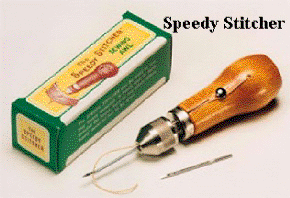 If your traveling from Canada to the United States or the reverse, you'll now need a Passport. You will want to start your application process 6 months in advance. A good travel agency and some financial institutions can help you with the process. Before crossing the borders you will want your vehicle insurance validated for the country you are traveling through. And you will need a script or card to carry proving you are insured. Your insurance agent can do this and most always it's a free service. We also make sure we have a copy of the prescription for the medicines we are taking with us, because we were checked once going into Canada and was able to prove the purpose of our medications. And there are certain restrictions as to what you can transport from one country to another, such as alcohol, tobacco products, wood items and other materials. You can get these questions answered by researching the internet.
If your traveling from Canada to the United States or the reverse, you'll now need a Passport. You will want to start your application process 6 months in advance. A good travel agency and some financial institutions can help you with the process. Before crossing the borders you will want your vehicle insurance validated for the country you are traveling through. And you will need a script or card to carry proving you are insured. Your insurance agent can do this and most always it's a free service. We also make sure we have a copy of the prescription for the medicines we are taking with us, because we were checked once going into Canada and was able to prove the purpose of our medications. And there are certain restrictions as to what you can transport from one country to another, such as alcohol, tobacco products, wood items and other materials. You can get these questions answered by researching the internet. A few years of touring brought the realization that we just couldn't remember all the turns, directions and highway numbers. Far to many times we would have to stop and dig out the old maps. One day I came up with the most brilliant idea I have ever had in my life. I take the time to type out in a 7.75cm (3 inches) wide column, font 14, the route, turns, highway numbers etc that we will take. The following is a small example of how this is written. (Taken from a Saskatchewan leg of a trip.)
Day 5.
| |
 The plastic sleeves can be found at most office supply stores. The plastic, semi-water proofs the paper. Then slip a piece of card board over the side you will not be reading. That way you won't have to flip it over and around, trying to figure out what page you are on. At the end of the day, throw the obsolete page away. The advantage of all this, is the list can be kept in your pocket or on the tank bib if you have one. Then when you are lost, you simply pull out the list and check. I do it often going down the road, because I carry mine in my tank bib. Judy has a copy she carries in her inside jacket pocket. That's handy, because if I am in heavy city traffic, I can ask her what the next highway number is, and do I go left or right. I don't have to try and look at mine. If you don't have a "Navigator" along with you, I suppose you either have to stop and look or get lost. This system may take some extra time and effort, but believe me, you'll thank yourself if you ever have to figure out where you are suppose to turn on a cold and rainy day. You'll be glad you didn't have to dig out that map. But, carry those maps anyway, in case you have to change your route for some unexpected reason.
The plastic sleeves can be found at most office supply stores. The plastic, semi-water proofs the paper. Then slip a piece of card board over the side you will not be reading. That way you won't have to flip it over and around, trying to figure out what page you are on. At the end of the day, throw the obsolete page away. The advantage of all this, is the list can be kept in your pocket or on the tank bib if you have one. Then when you are lost, you simply pull out the list and check. I do it often going down the road, because I carry mine in my tank bib. Judy has a copy she carries in her inside jacket pocket. That's handy, because if I am in heavy city traffic, I can ask her what the next highway number is, and do I go left or right. I don't have to try and look at mine. If you don't have a "Navigator" along with you, I suppose you either have to stop and look or get lost. This system may take some extra time and effort, but believe me, you'll thank yourself if you ever have to figure out where you are suppose to turn on a cold and rainy day. You'll be glad you didn't have to dig out that map. But, carry those maps anyway, in case you have to change your route for some unexpected reason.
| |
 About 3-4 months before our departure date, we make our reservations. Even making tent site reservations at a Provincial Park is a good idea. We didn't once and if it hadn't been for Andrea already having her tent site secured, we would have been forced to move on down the road. As it was, we were allowed to set up on her site. (She's such a sweet heart.) Always get a confirmation number or the name (and rank) of the person you talked to and add the date and time you made your reservations. More then once this information has helped me win an argument. This goes on a page in your book.
About 3-4 months before our departure date, we make our reservations. Even making tent site reservations at a Provincial Park is a good idea. We didn't once and if it hadn't been for Andrea already having her tent site secured, we would have been forced to move on down the road. As it was, we were allowed to set up on her site. (She's such a sweet heart.) Always get a confirmation number or the name (and rank) of the person you talked to and add the date and time you made your reservations. More then once this information has helped me win an argument. This goes on a page in your book.
| |
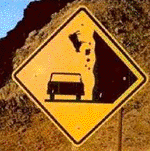 This is handy information if you reserved a site close to the wash rooms and when you arrive they have tried to place you way out where the poison ivy is. You can then say, "look here young man, on July 1st I reserved site # 4..." And, being a nasty man that I am, when they cheat me out of my reserved site and won't yield, I argue for a refund and a free nights stay." I have always gotten my way. But you will need your evidence. Remember though, argue your point in a calm and polite way. As my Grandmother always said. "You will get more flies with honey, then with vinegar."
This is handy information if you reserved a site close to the wash rooms and when you arrive they have tried to place you way out where the poison ivy is. You can then say, "look here young man, on July 1st I reserved site # 4..." And, being a nasty man that I am, when they cheat me out of my reserved site and won't yield, I argue for a refund and a free nights stay." I have always gotten my way. But you will need your evidence. Remember though, argue your point in a calm and polite way. As my Grandmother always said. "You will get more flies with honey, then with vinegar." A month or two before the day you leave, you may have a couple of other problems to consider. If you're a home owner, there's the question of who will mow the lawn and water the flowers. And if you have pets? Well, you can't trust Fluffy and Fido to just anyone.
| |
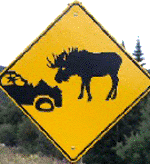
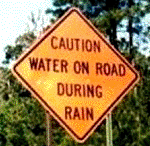 Two or three weeks before the departure date, you should also check the motorcycle over. Not just look at it, but check all those nuts and bolts. A full day on Saturday would be good for this. Check the tire pressure. Check all the lights. The horn, the gas cap. I caught a cracked gas cap seal once, before the two halves fell into the tank. How are those brake pads and shoes? How are the fluid levels? The idea is to give your self a few weeks to make repairs to what ever is required.
Two or three weeks before the departure date, you should also check the motorcycle over. Not just look at it, but check all those nuts and bolts. A full day on Saturday would be good for this. Check the tire pressure. Check all the lights. The horn, the gas cap. I caught a cracked gas cap seal once, before the two halves fell into the tank. How are those brake pads and shoes? How are the fluid levels? The idea is to give your self a few weeks to make repairs to what ever is required.
| |
 A week before departure date, you will want to have some idea as to what clothing you are going to take. Are you taking any food? Dishes? Soap? How are you packing all your stuff? See Andrea's tips on packing a bike and packing tools. We usually pack our clothing bags two days in advance of the day we leave. Normally it's not going to be clothes we would need before the trip anyway. You'll be busy enough on your departure date. You can inventory your stuff at the same time from the list you made. You didn't make a list of your clothing, towels, soap, tooth brush, sun screen, glasses, medicine, and such? A case in point? I once forgot my entire cache of underwear. I didn't know it until we made our first nights stop. I forgot to put them on the list. Not to worry, I bought some at the first department store we came to. Yes, I did have to wear the first pair for the most part of two days. Now, lets forget about that.
A week before departure date, you will want to have some idea as to what clothing you are going to take. Are you taking any food? Dishes? Soap? How are you packing all your stuff? See Andrea's tips on packing a bike and packing tools. We usually pack our clothing bags two days in advance of the day we leave. Normally it's not going to be clothes we would need before the trip anyway. You'll be busy enough on your departure date. You can inventory your stuff at the same time from the list you made. You didn't make a list of your clothing, towels, soap, tooth brush, sun screen, glasses, medicine, and such? A case in point? I once forgot my entire cache of underwear. I didn't know it until we made our first nights stop. I forgot to put them on the list. Not to worry, I bought some at the first department store we came to. Yes, I did have to wear the first pair for the most part of two days. Now, lets forget about that.
| |
|
Making preparations for your trip in advanced stages, can generate the excitement for the trip and if you have travel partners, can give you things to discuss and problems to solve. Having a good trip, seeing the sights and collecting memories is what touring is all about. Well made plans will make your journey much more enjoyable. Ride Safe
| |
More of Leonard's Motorcycle Touring ArticlesOne Pot Camping Recipes - Part 1 - Part 2
|

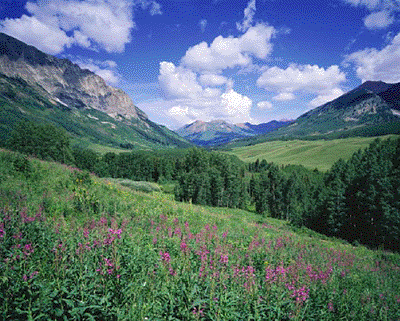 To me, touring is different then riding. Riding can be a few days out from home, or staying close to home on roads not traveled for a while, but still familiar. My gal Judy and I ride frequently, but due to our jobs, we only tour once or twice a year.
To me, touring is different then riding. Riding can be a few days out from home, or staying close to home on roads not traveled for a while, but still familiar. My gal Judy and I ride frequently, but due to our jobs, we only tour once or twice a year. 